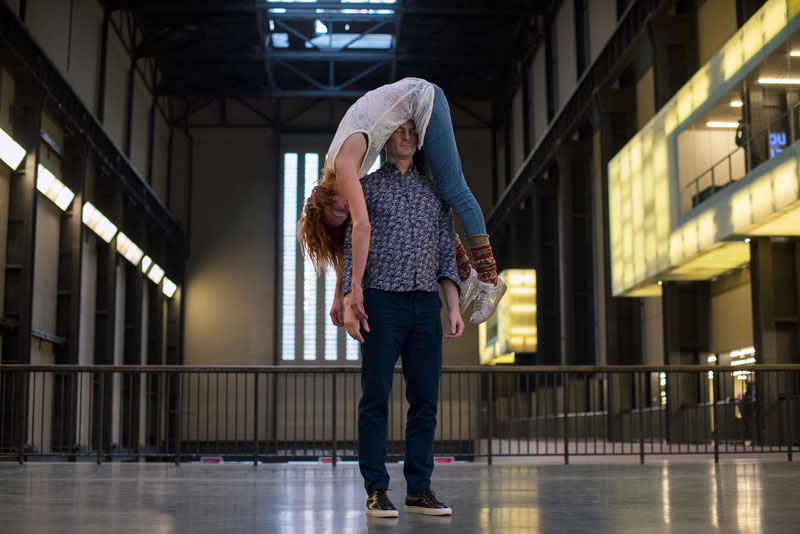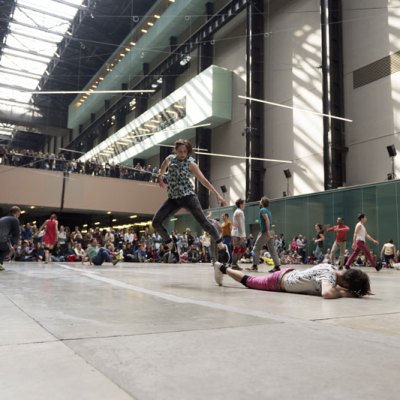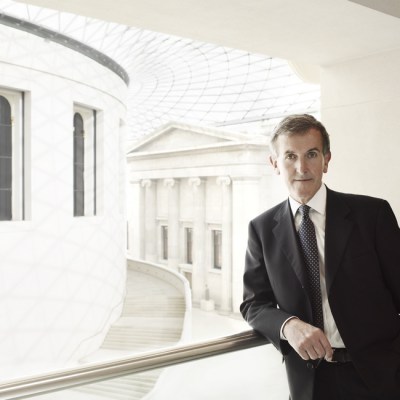In the vast belly of Tate Modern’s gallery spaces lies the ‘Arte Povera and Anti-Form’ room. Visitors swarm at the entrance, and assistants shepherd tourists, families and school children in and through the spaces. Some stop, others press on, lost on their way to the Rothko Room. In the midst of the crowd, a man in a black t-shirt and trousers crawls across the floor. His back arches bestially and suddenly a thick guttural rasp shatters the silence. To the slow choreographic scores of Japanese Butoh, Ko Murobushi drags himself to the security fence surrounding Kishio Suga’s Ren-Shiki-Tai (1973), knots his teeth around it, and gnaws at the wire.
Murobushi’s performance was a pertinent metaphor for the often-rigid relationship between objects and performance, but it also initiated a resistance to this separation. Staged last month during Tate’s weekend-long programme ‘If Tate Modern was Musée de la danse’, it formed part of 20 Dancers for the XX Century – a ‘collection of gestures’ presented throughout the permanent display spaces, in which dancers appropriated and reimagined choreographic artworks from the last century. Unsuspecting visitors stumbled upon performers recreating the movements of Yvonne Rainer, George Balanchine, Charlie Chaplin and others, against a backdrop of modern and post-war art. The staging of ‘Musée de la Danse’ offered a radical rethinking of how a group of performance ‘works’ might be incorporated into a museum, without being co-opted into its object-based collection.
Tate Modern is, for the most part, dedicated to monumental commissions and permanent displays – the explosive insertion of ‘Musée de la Danse’ opened up a fluid, joyously unstable alternative. Indeed, the increasingly frequent inclusion of performance within museums is transforming the very concept of collecting institutions. With the establishment of dedicated departments in galleries such as Tate, MoMA and FRAC Lorraine, performance is not only a regular highlight of gallery programming, but is successfully muscling its way into collections themselves.
‘BMW Tate Live: If Tate Modern was Musée de la danse?’ (15 and 16 May 2015) Photo © Hugo Glendinning 2015

In recent years, museums such as Tate and MoMA have made significant acquisitions of performance works, although in actual fact these often consist of documentation: Tate, for example, owns three photographic records of Vito Acconci’s SEEDBED from 1972. The translation of performance documentation into the collection as a ‘performance acquisition’ raises complicated philosophical, political and legal questions about the medium’s status in the realm of the gallery – museums often delimit performances according to their own preference for still, immutable objects. But perhaps such acquisitions also represent an exciting provocation of the medium itself – a chance to question what we consider ‘performance’ to be in the first place. As Catherine Wood, senior curator of performance at Tate has argued, they complicate the boundary between the ‘collection’ and the ‘archive’.[1]
That said, museums are increasingly acquiring what we might call the ‘live’ works, too. Tate purchased Tania Bruguera’s Tatlin’s Whisper #5 in 2009, and lists its media as ‘Performance, 2 people and 2 horses’. This is not to say that stored away somewhere in Tate’s vast reserve collection are two horses and two actors ready to roll, at any given moment, into the gallery space. But Tate does own, per se, the right to display the work – to ‘hire’ horses and people to enclose visitors in the Turbine Hall – in the same way they own the right to display Pablo Picasso’s Weeping Woman.
That’s no mean feat, though. All exhibitions, commissions and installations demand attention, time and space in a museum, yet arguably it is performance and live work that impacts the most upon all museum departments: visitor services (how will rotas work for gallery assistants ‘guarding’ the horses and policemen?); interpretation (how do we describe or display signage for this work?); ticketing services (how does one ‘sell’ a work for which there is no ticket to purchase?); and facilities (what are the health and safety implications of horses roving the Turbine Hall?) In sum, performance in the gallery asks for – and costs – a lot.
While museums figure out how best to integrate performance into their ‘permanent’ collections, live programmes such as Musee de la Danse pose exciting challenges to curators and visitors alike. Boris Charmatz’s manger, a version of which was performed during the programme, encapsulates the potentially radical provocation that performance poses in the museum. During the piece, dancers stand and gradually thrust rice paper down their throats while singing snatches of Beethoven and writhing on the cement floor. The piece is grotesque, comical and sculpturally stylised. As the dancers’ mouths bulge with saliva, the rice paper becomes a gastronomic exploration of the transience, and constant consumption, of matter. As a performance, it also consumes itself: once the sheets of paper have been eaten so too does the work finish and disappear. The audience claps, the dancers take their bows and exit the Turbine Hall. In their wake, scraps of rice paper flit silently in the air. In this moment, manger offers us a glimpse of performance’s own changing state. Where does it all go, what is left in its wake and where will the medium end up?
‘BMW Tate Live: If Tate Modern was Musée de la danse?’ was at Tate Modern from 15–16 May.
[1] Catherine Wood, ‘In Advance of the Broken Arm’ in Live Forever Collecting Live Art, ed. by Tessa Cajone (London: Koenig Books, 2014) pp. 123-147, p. 128



